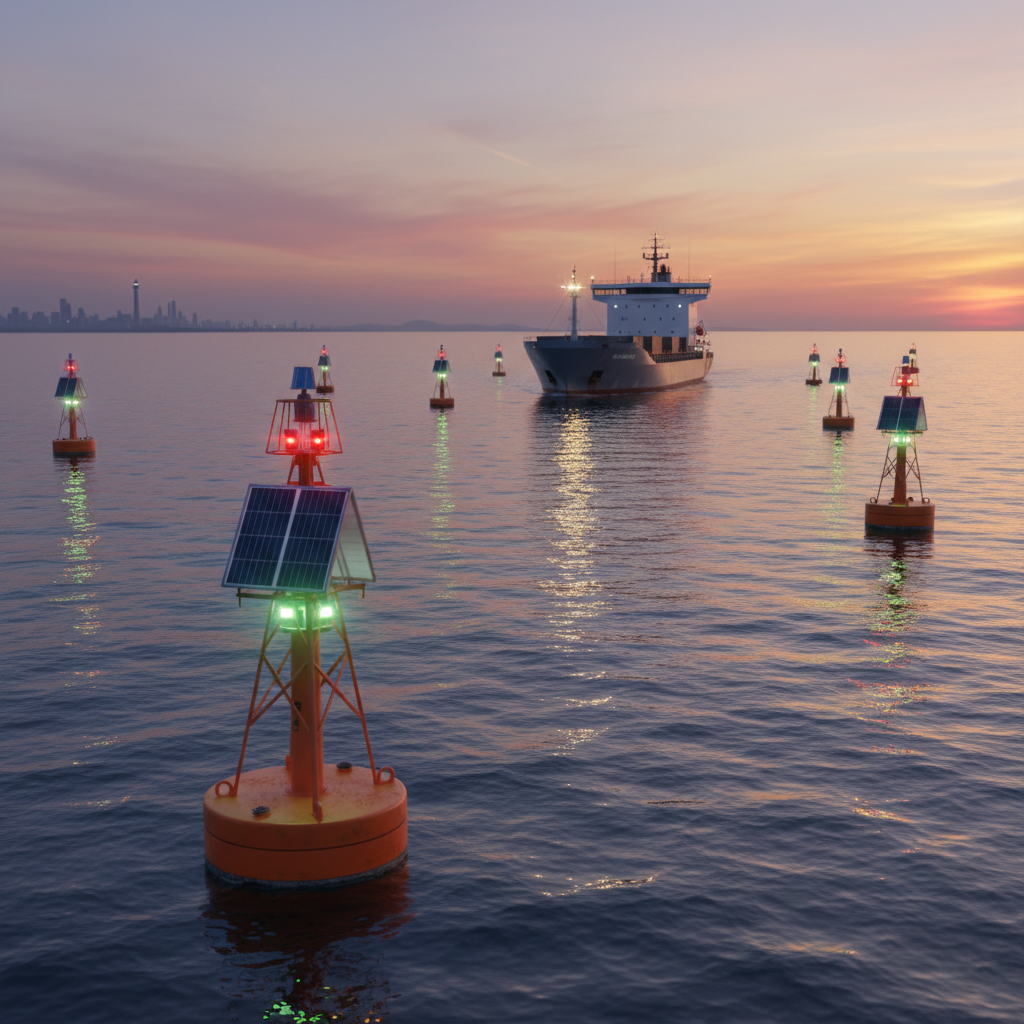Single-Deck vs. Double-Deck Navigation Lights: A Comprehensive Comparison

For maritime navigation, selecting the right navigation lights is essential. They ensure safety and compliance with international regulations. Two common types of navigation lights used on ships are single-deck navigation lights and double-deck navigation lights. Each type has its own set of features, advantages, and applications. In this article, we will explore the key differences between single-deck and double-deck navigation lights. This will help you make an informed decision.
Basic Design and Structure
Single-Deck Navigation Lights
Single-deck navigation lights are designed to be compact and integrated into a single layer or deck on the ship’s superstructure. This design makes them ideal for smaller vessels and those with limited space. They are typically easier to install and maintain due to their simpler structure.
Double-Deck Navigation Lights
Double-deck navigation lights, as the name suggests, consist of two layers or decks of lights. This design allows for more powerful and versatile lighting solutions. They are suitable for larger vessels. These lights meet the needs of those requiring more robust navigation systems. The double-deck design can also provide redundancy, ensuring that if one set of lights fails, the other can still function.
Performance and Functionality
Single-Deck Navigation Lights
Light Output: Single-deck lights generally have a lower light output compared to double-deck lights. They are sufficient for smaller vessels and less demanding navigational conditions.
Visibility: They provide adequate visibility for short to medium distances, making them suitable for coastal navigation and smaller waterways.
Redundancy: Modern single-deck lights offer redundant light sources. This feature ensures reliability. They may not provide the same level of redundancy as double-deck lights.
Double-Deck Navigation Lights
Light Output: Double-deck lights produce a higher light output. This is essential for larger vessels. They navigate in more challenging conditions, such as open seas or during adverse weather.
Visibility: They offer superior visibility. This allows longer distances to be illuminated. It is crucial for safe navigation in low-visibility conditions.
Redundancy: The double-deck design inherently provides redundancy. If one deck of lights fails, the other can continue to function. This enhances safety and reliability.
For a more practical comparison, check this resource from Yushuo. It shows how these two designs are applied in real-world maritime settings. It highlights different vessel applications and specifications.
Installation and Maintenance
Single-Deck Navigation Lights
Installation: Single-deck lights are generally easier to install due to their compact size and simpler design. They require less space and fewer components, making the installation process quicker and more straightforward.
Maintenance: Maintenance is also simpler and more cost-effective. With fewer components and a more straightforward design, single-deck lights are easier to inspect and repair.
Double-Deck Navigation Lights
Installation: The installation of double-deck lights is more complex and requires more space. It may also involve more components and a more intricate setup, which can increase installation time and cost.
Maintenance: Maintenance of double-deck lights is more involved due to their more complex design. However, the redundancy they offer can reduce the overall risk of system failure, potentially offsetting the higher maintenance costs.
Cost Considerations
Single-Deck Navigation Lights
Initial Cost: Single-deck lights are generally less expensive to purchase and install. Their simpler design and lower light output contribute to lower initial costs.
Operational Costs: Maintenance and operational costs are also lower due to their simpler structure and fewer components.
Double-Deck Navigation Lights
Initial Cost: Double-deck lights are more expensive to purchase. They are also more costly to install. This is due to their more complex design and higher light output.
Operational Costs: The initial costs are higher. However, the redundancy and higher performance of double-deck lights can lead to lower long-term operational costs. This is especially true for larger vessels operating in challenging conditions.
Regulatory Compliance
Both single-deck and double-deck navigation lights must comply with international maritime regulations. These regulations are set by the International Maritime Organization (IMO) and other relevant authorities. These regulations ensure that navigation lights provide adequate visibility and are clearly visible from all necessary angles.
Single-Deck Navigation Lights
Single-deck lights are designed to meet the minimum regulatory requirements for smaller vessels. They ensure that the vessel is visible and can be safely navigated in accordance with international standards.
Double-Deck Navigation Lights
Double-deck lights are designed to meet the more stringent requirements for larger vessels. They provide the necessary visibility and redundancy to ensure compliance with regulations in more demanding navigational conditions.
Conclusion
Choosing between single-deck navigation lights and double-deck navigation lights depends on the specific needs and conditions of your vessel. Single-deck lights are ideal for smaller vessels and those with limited space, offering a cost-effective and simpler solution. Double-deck lights, on the other hand, are better suited for larger vessels. These lights provide higher light output and superior visibility. They also offer redundancy for enhanced safety.
Whether you choose single-deck or double-deck navigation lights, make sure they meet regulatory standards. Proper maintenance of these lights is crucial for maritime safety. If you have any questions, please reach out to us. We can also provide further guidance on selecting the right navigation lights for your vessel.
- Art
- Causes
- Crafts
- Dance
- Drinks
- Film
- Fitness
- Food
- Games
- Gardening
- Health
- Home
- Literature
- Music
- Networking
- Other
- Party
- Religion
- Shopping
- Sports
- Theater
- Wellness


